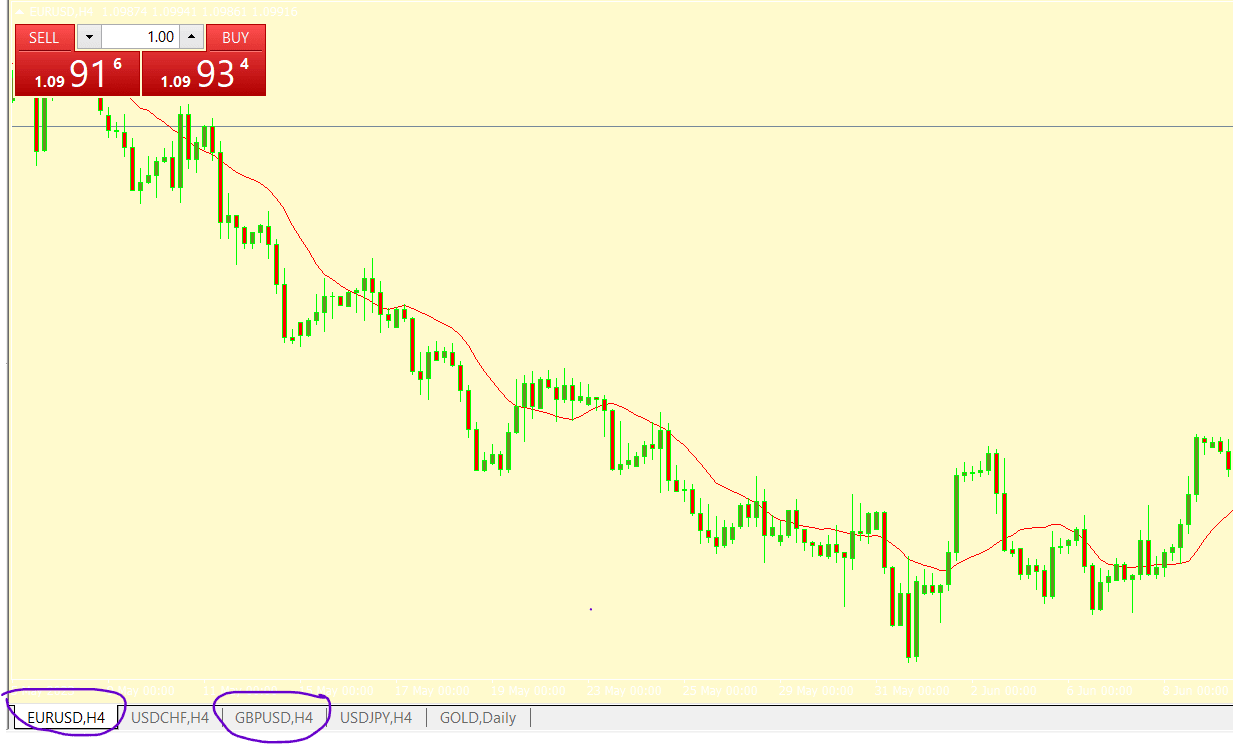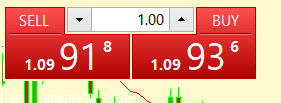Introduction to Forex Trading: Exploring the World of Currency Exchange
Introduction to Forex Trading
Forex trading, also known as foreign exchange trading, is a decentralized global market where participants buy and sell currencies. It is the largest and most liquid financial market in the world, with trillions of dollars being traded daily. In this comprehensive guide, we will provide an overview of forex trading, including its participants, basic concepts, and the factors that influence currency prices. Whether you're a beginner looking to enter the world of forex or an experienced trader seeking to deepen your knowledge, this article will equip you with the essential information to navigate the foreign exchange market.
Participants of Forex Trading: -
Forex trading, being a global decentralized market, involves various participants who engage in the buying and selling of currencies. Each participant plays a crucial role in shaping the dynamics of the foreign exchange market. In this article, we will delve into the key players of forex trading, understanding their roles and motivations. Whether you're new to forex trading or looking to deepen your knowledge, gaining insights into these participants will help you navigate the market with more confidence.
1. Commercial Banks
Commercial banks are among the most significant participants in forex trading. They facilitate currency transactions for their clients, including corporations, institutions, and individuals. Banks provide liquidity to the market by offering competitive bid and ask prices. Additionally, they engage in proprietary trading, seeking opportunities to profit from currency price fluctuations.
2. Central Banks
Central banks, such as the Federal Reserve (Fed), European Central Bank (ECB), or the Bank of Japan (BoJ), play a vital role in forex trading. Their primary responsibility is to manage monetary policy and ensure stability in their respective economies. Central banks can directly influence currency prices through measures such as adjusting interest rates, implementing quantitative easing programs, or intervening in the forex market. Traders closely monitor central bank actions and announcements for potential trading opportunities.
3. Corporations and Businesses
Multinational corporations and businesses engage in forex trading to facilitate international trade and manage foreign currency exposures. For example, a company based in the United States that imports goods from Europe needs to convert its US dollars into euros to complete the transactions. These corporations participate in the forex market to hedge against currency risks and ensure smooth operations across borders.
4. Institutional Investors
Institutional investors, including pension funds, hedge funds, and asset management firms, actively participate in forex trading. They execute large-volume trades on behalf of their clients, such as pensioners or investors seeking exposure to global currencies. Institutional investors often rely on sophisticated trading strategies, technical analysis, and fundamental research to make informed trading decisions.
5. Retail Traders
Retail traders comprise individuals who trade currencies for personal investment purposes. These traders access the forex market through online brokerage platforms. Retail trading has experienced significant growth with the advent of technology and increased accessibility to trading platforms. Retail traders can leverage various tools, such as charts, indicators, and automated trading systems, to execute trades and manage their positions.
6. Non-Bank Financial Institutions
Non-bank financial institutions, including insurance companies, investment banks, and pension funds, actively participate in forex trading to diversify their investment portfolios and generate returns. These institutions engage in forex trading to capitalize on currency fluctuations and optimize their investment strategies.
7. Speculators and Individual Investors
Speculators and individual investors represent a diverse group of participants in forex trading. They aim to profit from currency price movements by speculating on short-term or long-term trends. Speculators often use technical analysis, chart patterns, and trading indicators to identify potential entry and exit points. Individual investors can access the forex market through online trading platforms and actively manage their currency trades.
Basic Concepts of Forex Trading: -
Forex trading, also known as foreign exchange trading, involves buying and selling currencies with the aim of making a profit from the fluctuations in their exchange rates. To successfully navigate the forex market, it's essential to grasp some basic concepts that form the foundation of currency trading. In this article, we will explore these fundamental concepts, providing you with a solid understanding of how forex trading works.
Currency Pairs
In forex trading, currencies are always traded in pairs. Each currency pair consists of a base currency and a quote currency. The base currency is the currency you buy or sell, while the quote currency is the currency you use to make the transaction. For example, in the EUR/USD currency pair, the euro (EUR) is the base currency, and the U.S. dollar (USD) is the quote currency.
In the below Diagram we can the currency pair which is highlighted

Bid and Ask Price
When trading forex, you will come across two prices: the bid price and the ask price. The bid price is the price at which the market is willing to buy the base currency from you, while the ask price is the price at which the market is willing to sell the base currency to you. The difference between the bid and ask price is known as the spread.

In the above diagram you will select to buy or sell by just a click and modify the volume.
Spread and Pips
The spread represents the cost of the transaction and is measured in pips. A pip is the smallest unit of price movement in forex trading and stands for "percentage in point." Most currency pairs are quoted to the fourth decimal place, so a one-pip movement represents a change of 0.0001. However, some currency pairs are quoted to the second decimal place, where a one-pip movement equals 0.01.

In the above diagram you can see the gap between the pair is called as spread and the price which is shows in 4 decimal is call as pip.
Long and Short Positions
In forex trading, you have the flexibility to take either a long position or a short position. Taking a long position means buying a currency pair with the expectation that its value will increase. On the other hand, taking a short position means selling a currency pair with the anticipation that its value will decrease. Profits are realized by closing the position at a more favorable exchange rate than the one at which it was opened.
Leverage and Margin
Leverage allows traders to control larger positions in the market with a smaller amount of capital. It amplifies both profits and losses. For example, if you have a leverage of 1:100, it means that for every $1 you have in your trading account, you can control $100 in the market. While leverage can increase potential profits, it's important to use it with caution, as it also magnifies the risks involved in trading.
Margin is the amount of money required to open and maintain a position in the forex market. It serves as collateral for the leveraged trade. Margin requirements vary depending on the broker and the leverage chosen. It's crucial to understand and manage your margin requirements to avoid margin calls or the automatic closure of your positions.
Market Orders and Limit Orders
When executing trades in the forex market, you have two primary types of orders: market orders and limit orders. A market order is an instruction to buy or sell a currency pair at the current market price. It ensures the immediate execution of the trade.
On the other hand, a limit order allows you to set a specific price at which you want to enter or exit a trade. If the market reaches your desired price, the limit order is executed. Limit orders can be useful when you want to enter a trade at a more favorable price than the current market price or when you want to lock in profits by exiting at a predetermined price.
Technical Analysis and Fundamental Analysis
Forex traders rely on two main types of analysis: technical analysis and fundamental analysis. Technical analysis involves studying historical price data, charts, and indicators to identify patterns and trends that can help predict future price movements. It focuses on analyzing price action and market behavior.
Fundamental analysis, on the other hand, involves evaluating economic factors, such as interest rates, GDP growth, employment data, and geopolitical events, that can influence currency values. It aims to understand the underlying forces driving supply and demand in the forex market.
Factors Influencing Currency Prices: -
Currency prices in the foreign exchange market are influenced by a multitude of factors. Understanding these factors is essential for forex traders as it helps them make informed decisions and anticipate potential movements in exchange rates. In this article, we will explore the key drivers that influence currency prices, shedding light on the complex dynamics of the forex market.
1. Interest Rates
Interest rates play a significant role in shaping currency prices. Central banks adjust interest rates to manage inflation and stimulate economic growth. Higher interest rates attract foreign investors seeking better returns on their investments, which increases the demand for the currency. As a result, the currency strengthens. Conversely, lower interest rates can lead to a decrease in currency value as investors seek higher returns elsewhere.
2. Economic Indicators
Economic indicators provide insights into the health and performance of an economy. Forex traders closely monitor indicators such as Gross Domestic Product (GDP), employment data, inflation rates, trade balances, and consumer sentiment. Positive economic data can strengthen a currency as it indicates a robust economy, while negative data can weaken a currency.
3. Political Stability
Political stability and geopolitical events can have a significant impact on currency prices. Currencies of politically stable countries are generally more attractive to investors, leading to increased demand and appreciation. On the other hand, political instability, elections, or geopolitical tensions can cause uncertainty and lead to currency depreciation.
4. Market Sentiment
Market sentiment refers to the overall attitude and perception of traders towards a particular currency. Positive sentiment can drive currency prices higher, while negative sentiment can result in declines. Market sentiment is influenced by various factors, including economic news, political developments, market trends, and investor confidence.
5. Central Bank Policies
Central banks, through their monetary policies, have a direct impact on currency prices. Central banks use tools such as interest rate adjustments, quantitative easing, and open market operations to influence the money supply and control inflation. Changes in monetary policy can significantly affect currency values, and traders closely monitor central bank statements and actions.
6. Trade and Capital Flows
International trade and capital flows influence currency prices. Countries with trade surpluses (exports exceeding imports) typically experience a stronger currency as foreign buyers need to acquire the currency to make payments. Conversely, countries with trade deficits may see their currency weaken. Capital flows, including foreign direct investment and portfolio investment, also impact currency values.
7. Geopolitical Events
Geopolitical events, such as wars, conflicts, and trade disputes, can create volatility in the forex market. These events often introduce uncertainty, which can lead to fluctuations in currency prices. Traders closely monitor geopolitical developments and their potential impact on the global economy and specific currencies.
8. Market Speculation
Speculation plays a role in currency price movements. Traders and investors make speculative bets on future currency movements based on their analysis of various factors, including economic data, political events, and market trends. Large-scale speculative activity can create significant volatility in currency markets.
Conclusion
Forex trading offers individuals and institutions the opportunity to participate in the global currency market and potentially profit from currency price fluctuations. In this comprehensive guide, we have explored the basics of forex trading, including its participants, fundamental concepts, factors influencing currency prices, and the importance of developing a trading strategy. By applying the knowledge gained from this article and continuously expanding your understanding of the forex market, you can enhance your trading skills and increase your chances of success.











Discussion